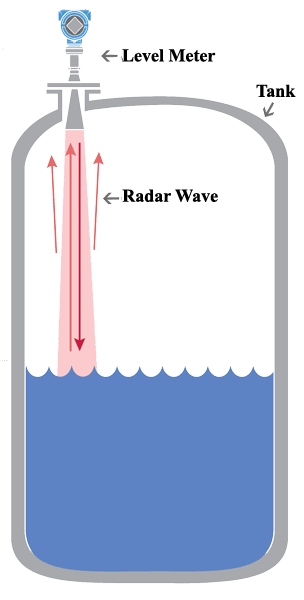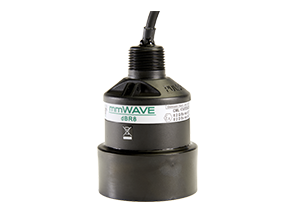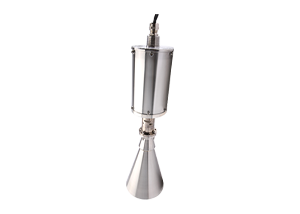Measuring fluid levels in tanks is a fundamental requirement across various industries, including water, sewage, oil, gas, petrochemical, steel, cement, food, pharmaceutical, and chemical sectors.
Radar level meters, akin to ultrasonic devices, operate based on signal flight duration. However, they distinguish themselves by employing short-duration continuous radio waves. These radio waves belong to the electromagnetic spectrum, characterized by high frequency and falling within the GHz range.
The sensor generates a pulse directed into the tank, penetrating the liquid substance. Upon hitting the surface, the pulse reflects and returns to the sensor.
Precise calculation of the fluid level inside the tank is achieved by determining the time interval of the section devoid of the fluid substance. This information is then relayed to the control unit through standardized signals.
The return radar signal’s strength is critical for successful reception by the sensor, influenced by factors such as fluid surface characteristics, sensor-to-fluid distance, and the reflection direction.

In scenarios where the surface exhibits turbulence, the returning radar signal may scatter in directions away from the radar sensor. Additionally, in tanks with considerable height, a portion of the signal may experience attenuation or loss over long distances.
It’s crucial to note that different fluids possess distinct reflective properties for radar waves. Conductive fluids reflect the entirety of microwaves, while non-conductive substances only reflect a fraction of radar wave energy, a characteristic known as the dielectric constant. Fluids like water, with high dielectric constants, are highly reflective, while those with low dielectric constants exhibit poor reflectivity.
A radar level meter, strategically positioned atop the tank at an optimal distance from the tank wall, deploys its antenna to transmit waves to the fluid or stack of solid materials. When measuring reservoir levels, especially under challenging conditions like high temperature, high pressure, or the presence of foam, radar level meters prove exceptionally efficient and versatile.
The density or electrical conductivity of materials within the tank, as well as the presence of dust and noise, have minimal impact on the radar level meter’s measurement quality.
When purchasing radar level meters, considerations should encompass factors such as the required measurement range, the device’s measurable range, desired accuracy, distance from potential disturbances, the material type within the tank, acidity or alkalinity potential, and the likelihood of foam presence on the fluid’s surface.



